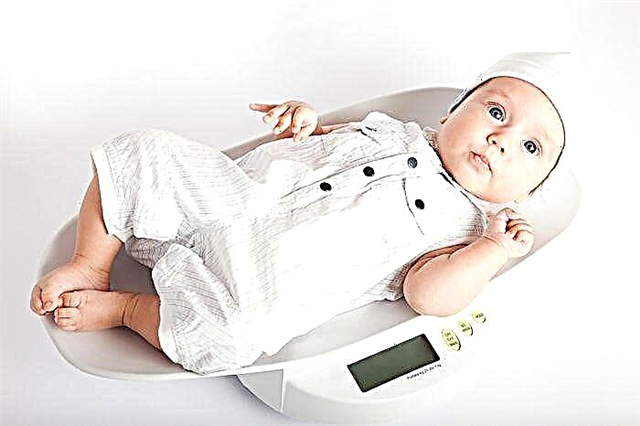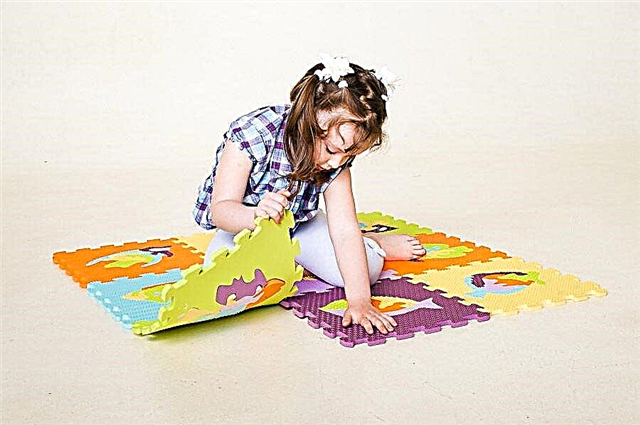The newborn looks helpless. It really is. Mothers, having taken the baby for the first time, are worried no matter how to harm the little man. The medical staff warns that newly-made parents are required to hold the child's head during any manipulations with him, since the baby's neck muscles are completely undeveloped. When the child begins to hold his head, he will no longer need a safety net and how to help strengthen the infant's musculoskeletal system?

Newborn in mom's arms
When little ones hold their heads on their own
The baby's head appears disproportionately large compared to the body. The cervical vertebrae have not yet strengthened. Therefore, there is no question of independent and confident retention of the head in the first months of a baby's life.
Maturation and development of newborns are never the same. This also applies to healthy babies, and even more so premature babies. Not a single specialist will undertake to name the exact time for strengthening the neck of the crumbs. However, there are lower and upper limits for the period when the child ceases to need a safety net.
Pediatricians call the period from 2 to 4 months a normal indicator for the beginning of independent retention of the head of a healthy baby. This usually happens in 3-3.5 months.
Important! Before the baby begins to hold his head on his own, he needs constant safety net in any position. Especially when feeding and when carried in a "column" on the hands. To avoid injury, you must avoid sudden head deviations.
How a child learns to coordinate head movements
The development of the baby is happening rapidly. Every day he gains new skills, becomes more and more interested in the world around him. To fully develop, the baby needs to learn how to control his body.
In what sequence does the process take place
The skill of holding the head without support in the baby is developed gradually:
- A three-week-old baby, laid on his tummy, wants to examine the situation around him and raises his head for just a couple of moments.
- A month-old baby deftly twists his head to the sides to determine the source of the sound of interest to him.
- A two-month-old baby learns to maintain the position of the head in line with the body by lifting it by the handles. He is actively turning his head, but support is still required.
- An infant at the age of 2 months confidently raises its head and holds it for 10-15 seconds when lying on its back.
- At 3 months, the baby does not hold his head in an upright position for long - about a minute. A safety net is still needed.
- At 3.5-4 months, the baby is quite capable of controlling its head without the help of its parents - turning it around and confidently holding it without help for a long period of time in an upright position. Lying on his tummy, the baby even rises on the arms. In the supine position, he also tries to raise his head, this is considered an attempt to sit down.

The kid, lying on his stomach, rises in his arms
Note! In premature babies, the timing of strengthening the cervical vertebrae is shifted. It depends on the difference between the actual and estimated due date. Those. A baby born at 36 weeks will develop 2 weeks longer than a baby born at 38.
How to help your child learn to fix the head vertically
Without parental help, the timing of confident self-fixation of the baby's head can shift upward. To train the muscles, the child needs stimulation. Experts advise putting the baby on the tummy as soon as the umbilical wound heals. At first, the procedure takes no more than half a minute at a time and gradually increases to a convenient time for the baby. The "prone" position not only helps to strengthen the muscles and vertebrae, but also prevents the development of "colic", which manifests itself in many infants under 3 months of age.
There are several more recommendations, the observance of which will help strengthen the neck muscles of the newborn:
- during sleep, the baby's head must be periodically turned in different directions;
- neck and body massages have a beneficial effect, if the child is healthy, then parents can perform them on their own;
- mothers who are breastfeeding newborns should carefully monitor their diet and control the weight of the baby;
- fitball exercises are good for the neck and spine;
- from the age of one month, boys and girls can be taught to swim at home or in the pool in a specialized circle that helps to strengthen the muscles.

Baby swims in a circle
Additional Information. From 2 months of age, when carrying the baby in an upright position, you can slightly loosen the hand that supports the back of the baby's head. Over time, it is recommended to remove it for a short time so that the baby can train the muscles.
Exercises to strengthen neck muscles
Gymnastics with babies will also help to quickly strengthen the muscles and vertebrae of the neck. For each exercise, an average of 2 minutes is sufficient. According to the child's reaction, parents will see how long he is ready to study:
- Put the baby on the tummy. Support the chin with one hand, and touch the baby's feet with the other. The crumb will start to push off with his legs, as if crawling.
- In the position of the child "lying on his stomach" put one hand on the chin. Push the second under the tummy and, slowly, pull the baby forward. The kid will make crawling movements.
- Lay the baby on the back. Take it by the handles, gently pull it towards you. Standing up, the child will try to keep the slightly "dangling" head in an upright position straight.
- Put the baby on your hand with your tummy and scoff, holding your head in this position. After a couple of minutes, the baby will begin to raise its head to look at the surrounding objects.
- Take the baby in your arms in a tilted-lateral position. Change the side periodically. The baby will begin to raise his head and straighten his legs.
- Put the child on a hard surface with his feet, holding his hands. The baby will raise his head, trying to keep it straight, straighten his torso and legs. If you pull it a little by the handles, the baby will take a small step.
Note! If the kid does not like any of the exercises, then you should not force him to do it.
How to know that a safety net is not needed
A baby who has reached 3 months is strong enough. In the "lying on his stomach" position, he is able to confidently and for a long time keep his head raised, twist it and even try to roll over on his side. However, it is still necessary to insure its head in an upright position.
You can make sure that the baby no longer needs constant insurance at home. For this, it is recommended to conduct a special test:
- Lay the child on the back. Take the handles and slowly pull towards you so that he crouches down.
- In this position, the baby must hold his head for at least half a minute. Slight wobble of the head is acceptable.
- Put the baby in the starting position - on his back.
- Again, gently pull the handles so that it hangs and only holds the parental hands.
- In this position, a healthy baby will fix his head for 10-30 seconds, then he can tilt it back.

The child holds his head when his mother raises him to the "sitting" position
Important! It is recommended to conduct a lesson when the child is in a good mood. If the manipulation causes tears and discontent in the infant, testing should be stopped.
Why does the baby not hold his head and what to do
Most pediatricians say that 4 months is the deadline for boys and girls to start holding their heads without support. Sometimes even half-year-old babies are not able to keep their head straight. A delay in this parameter of a child's development can occur in several cases:
- difficult, pathological childbirth, resulting in a birth trauma in the baby;
- neurological problems in the baby;
- prematurity;
- passivity of parents in relation to the development of the child or excessive custody, constant safety net of the head and the fear of putting the child on his stomach;
- eating disorder.
Premature babies are characterized by untimely development, normally they are a little "late" from their peers born on time. Usually, by the age of one year, all indicators equalize, and it is difficult to distinguish a premature baby.
Massages can help with neurological disorders. They should be carried out by a specialist. The task of the parents is to follow all the instructions of the doctor.
In case of birth trauma, treatment is carried out only under the supervision of a doctor and depends on the severity of the pathology.
If the reason for the lag is poor nutrition, then it needs to be adjusted. A pediatrician will help you figure this out.
Additional Information. According to Dr. Komarovsky, it is the parents who bear most of the responsibility for the development of their child. Nature is arranged in such a way that over time, the baby himself will begin to control the body well. But moms and dads can speed up this process by stopping overprotecting the baby and letting go of their fears.
When you need a doctor's help
Some mothers boast that their baby is ahead of development and in a month and a half already confidently holds the head on its own. Pediatricians warn that this phenomenon is considered a pathology and requires an immediate visit to the doctor. Often the reason for such an accelerated "development" is HPP - high cranial pressure. This condition makes the muscles tense and can lead to serious consequences, therefore it requires urgent correction.
Important! With a timely visit to the doctor, it is enough to undergo one or two massage courses. Delaying treatment can be bad for your baby's development.
At 4-5 months, there comes a period when it is time for the child to start holding his head on his own, without requiring a safety net. If this did not happen, then the probable reasons may be the following problems:
- Hypotonicity is a condition characterized by the relaxation of the muscles of the child. Such children are lethargic, eat poorly, do not respond to reflex tests, do not resist if they are pulled by the hands or tried to sit. Physical therapy and a massage course will help to correct the situation.
- Hypertonicity - excessive muscle tension in the body. In newborns, it is considered normal - their legs are drawn in, palms are clenched into fists. Over time, with proper care, the state of physiological hypertonicity should go away by three months. A baby with hypertonicity is easy to recognize - he is irritable, does not sleep well and suffers from frequent regurgitation. With prolonged hypertonicity, the neurologist prescribes massages, electrophoresis, swimming, physiotherapy exercises. Launched hypertonia is treated with medications that can relax the muscles.
- Dystonia is a combination of relaxation and tension in the muscles of the body. In this case, the child assumes unnatural postures. For example, one hand is in a fist, the other - fingers are straightened. With dystonia, an additional study is prescribed, according to their results - treatment.
Another reason why the baby may not hold the head itself is torticollis. There are 3 types of pathological conditions:
- Congenital muscle torticollis (IMC). The disease manifests itself immediately at birth. The reasons for its appearance are the underdevelopment of the sternocleidomastoid muscle during the intrauterine formation of the skeleton of the child or pathological childbirth, leading to birth trauma. The baby has an asymmetry of the face, one shoulder is sloped downward, the other is raised. The head is thrown back and inclined to the shoulder, the face is directed in the opposite direction. Some children with IUD lag behind their peers in psychomotor development.
- False torticollis or hypertonicity. It is usually not considered a pathology because muscle tension is common in babies. By 3 months of age, most often it goes away on its own.
- Installation torticollis. This variety is considered acquired. At risk are babies whose head is turned to one side during sleep. During wakefulness, toys and interesting objects are located only on one side of the newborn. The baby simply does not have the stimulating factors to change the position of the head, he looks in one direction. The muscles of the opposite begin to atrophy, torticollis is formed.

Torticollis in a baby
Note! Parents' suspicion of torticollis in a baby requires an immediate visit to a pediatrician and a neurologist.
When confirming the problem, the doctor will prescribe physiotherapy exercises, massages, and recommend watching the turn of the sleeping baby's head. In some cases, special neck braces are prescribed.
If a child at 3 months does not hold his head confidently, then you should not panic - each baby develops individually. You don't need to rely only on nature. Newly made mom and dad need to help the baby, make him move, stimulate activity with bright toys. Then the child will sooner learn to control the body and begin to hold his head himself.



